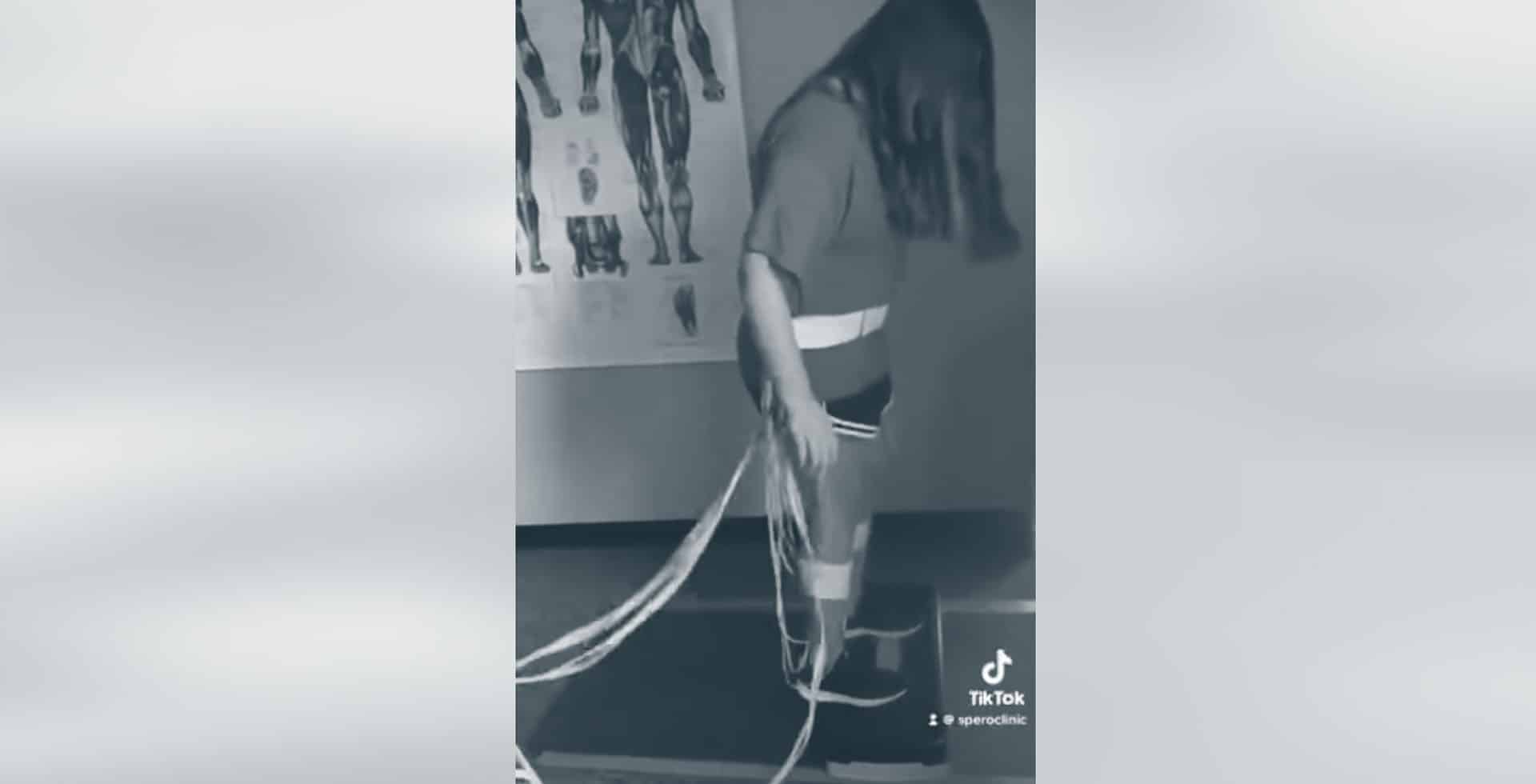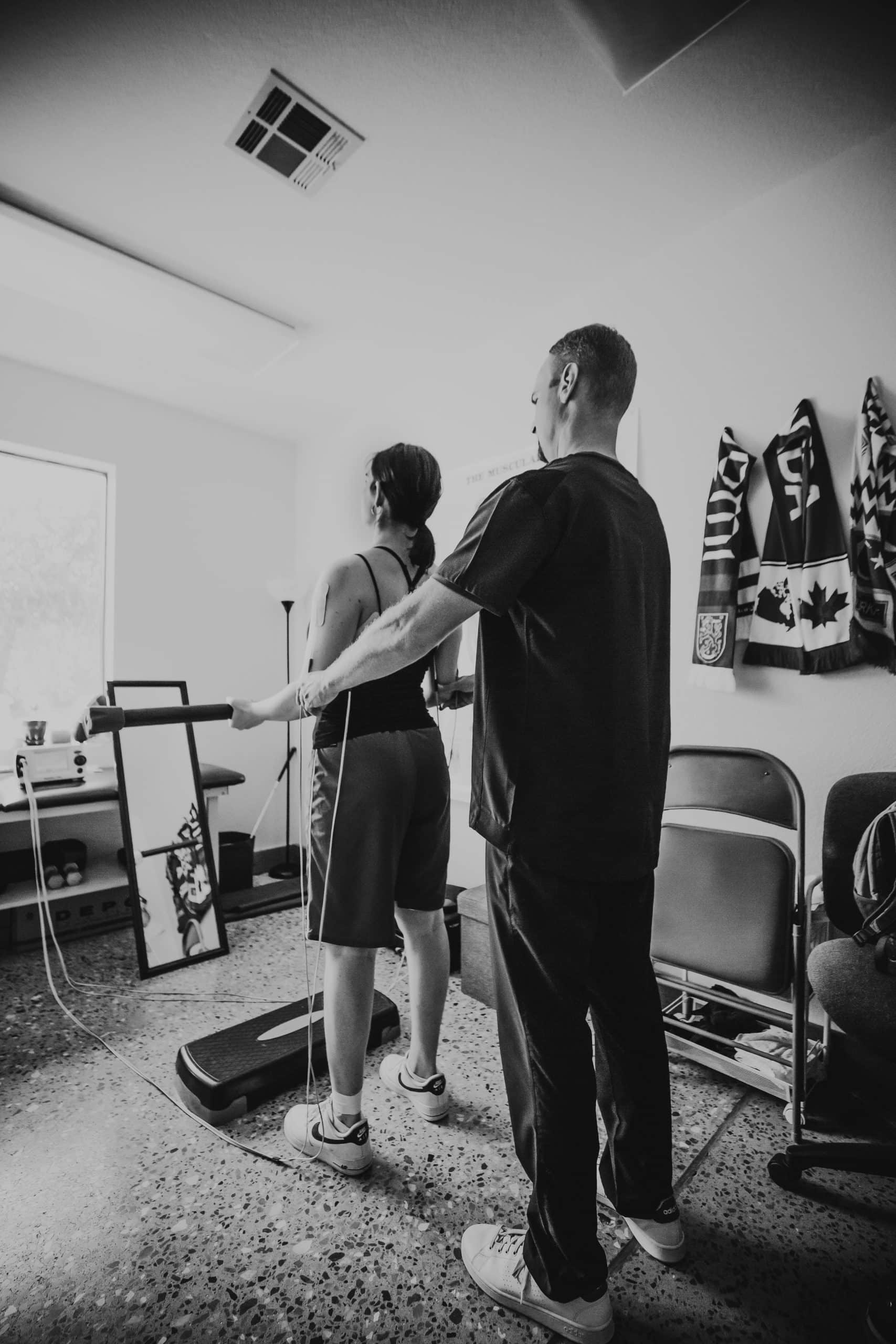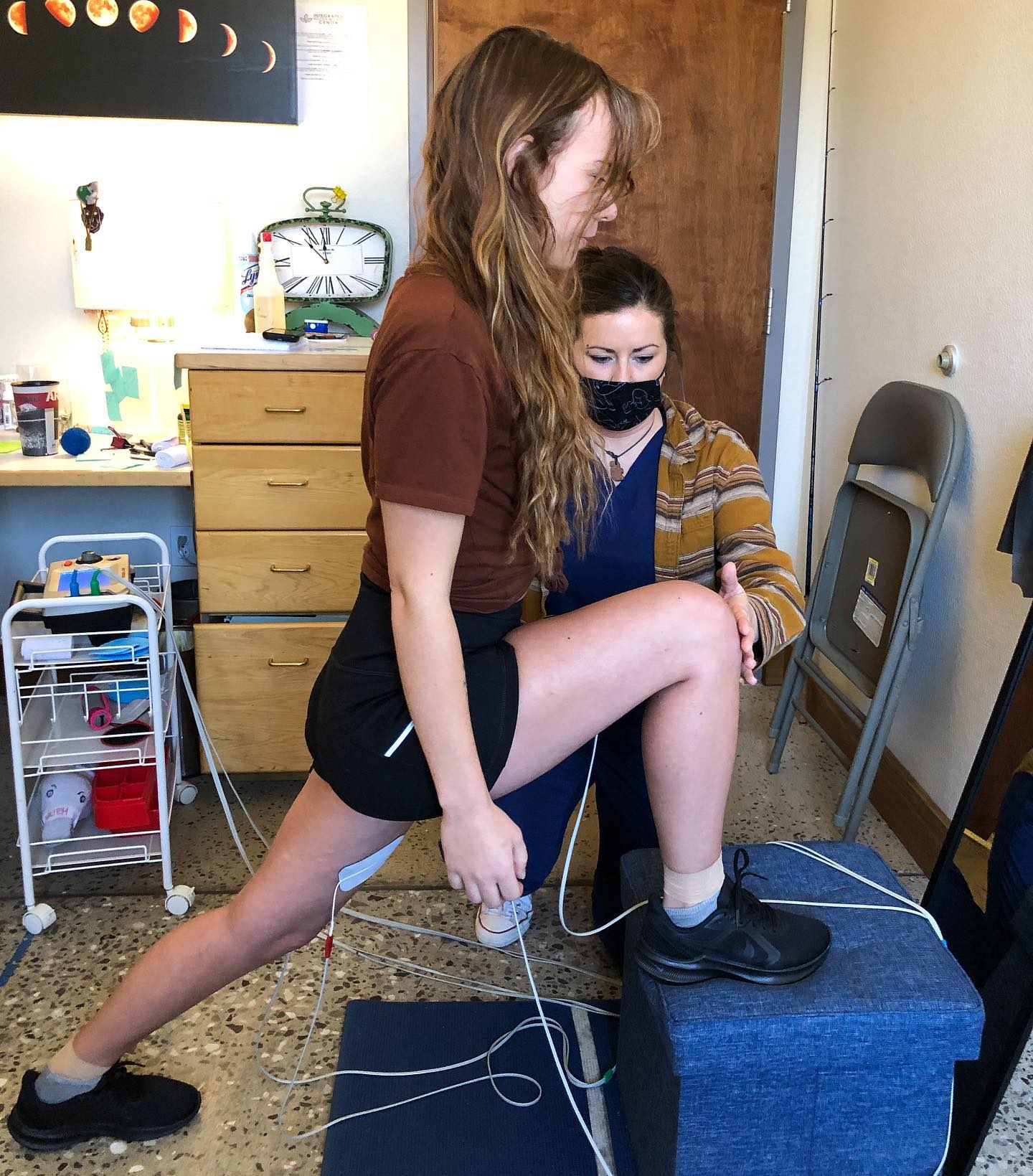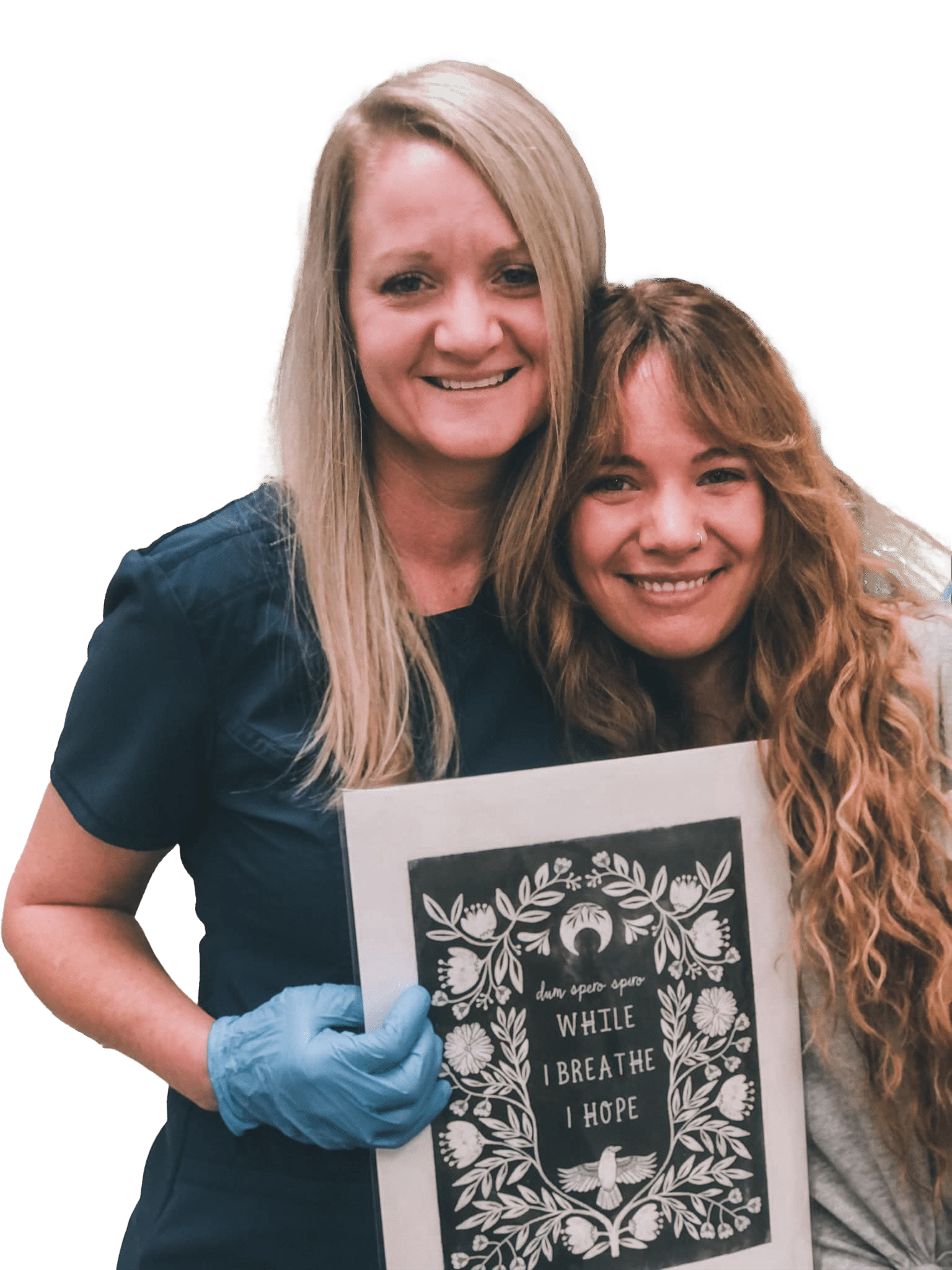The typical CRPS patient has been to many, many different doctors. They have navigated a maze of hospitals, clinics and specialists that most people cannot even begin to imagine the sheer volume of. They have been prodded, poked, stabbed (illadvised for CRPS patients) and misdiagnosed many times. Chances are, they have been at least suspected (if not outright accused) of being pill-seeking junkies or malingering (a fancy medical word that basically means you are lying your butt off about your pain and symptoms.) The average CRPS patient will go misdiagnosed or undiagnosed for years before they are lucky enough to find out what is wrong with them. Many figure it out on their own with the help of the Internet, and have to then set out to prove it to their doctors. Who is responsible for your health? You are. Who cares most about your health? You do. It is your responsibility to make sense of your symptoms—to not only understand them, but to understand what is causing them.
Many doctors have never heard of CRPS and don’t understand it. Even if patients are lucky enough to obtain an early diagnosis, finding successful treatment is as difficult as hunting a mythical unicorn down. Patients may spend thousands simply in copays and traveling cost only to be financially destroyed by the time they do find a promising treatment, usually not covered by insurance. It is frustrating, it is hard, it is a rotten luck of the draw. However, one can sit down, or one can get back up. These are your choices. Keep fighting, be your own best advocate, or throw up your hands and hope it doesn’t get worse and that someone will let you know on Facebook once they find a cure one day and that insurance will cover it.
I hope that doesn’t sound harsh as I intend this to be a rallying speech, not a depressing one. Patients have to understand their own symptoms and how they are connected. They have to know what they mean and how one problem links to another. It is my hope that this book will help you to navigate the symptom maze and leave you more savvy and educated than before. If a doctor wants to describe a medication to you for constipation, for example, you have to know why you are most likely constipated and if taking this medication is a smart move for you. You have to know if the medication has side effects and what they are. You can’t ever rust anyone else to be a better steward of your body than you are. You can’t expect others to guard your health better than you can.
In order to start unraveling your symptoms, we will look at the more common symptoms associated first, and then delve into the lesser known ones.
The Well-Known Symptoms of CRPS
Over the years, diagnosing CRPS has changed quite a bit. These days, the Budapest criteria are often used to diagnose CRPS. These categories are most widely used and were developed by pain clinics to differentiate between CRPS and other neuropathic conditions (Harden et al., 2010). These look at four main categories of symptoms as shown below:
- Sensory abnormalities, such as an abnormal pain response to normal everyday sensory input. This includes directional pressure (such as being poked with a finger), light touch, circumferential pressure (such as putting on a tight sock), pain (being stabbed with a sharp object), cold, heat, exposure to humidity and vibration. Pain will also be perceived at a heightened intensity.
- Vasomotor abnormalities, which include differences in skin temperature greater than 1 degree Celsius, and a difference in skin color when comparing one part or limb of the body to the opposite part or limb.
- Sudomotor/edema, which include asymmetry in swelling and sweating.
- Motor/trophic, which is defined as decreased movement, muscle or nerve weakness, tremors, and changes in hair, skin or nails.
CRPS is identified by these symptoms in the following way:
- A: Ongoing pain than doesn’t match the original injury in intensity or duration
- B: At least one symptom from two or more of the Budapest categories mentioned above
- C: At least one symptom from three or more of the four Budapest categories mentioned above
- D: A lack of alterative diagnosis
I want to delve into the symptoms that often exist concurrently with CRPS, but that may not be commonly associated with it or may be treated as separate issues. It is important to note that these symptoms may be experienced in addition to the most common or obvious symptoms associated with CRPS. You may suffer from just a few, or if you are unlucky, from a long list of these.
How to Make Sense of Your Body Gone Haywire
Your Cranial Nerves:
The Front Door to Your Nervous System
The cranial nerves are twelve pairs of nerves on the ventral (bottom) surface of the brain. These nerves control a lot of important things, and their purpose is mainly to connect you with the world around your body. Think of these nerves as your nervous system’s front door to the world. These nerves allow you to hear, see, taste, and smell. Some of these nerves bring information from the sense organs to the brain. Some control muscles; others are connected to glands or internal organs such as the heart and lungs. One of the main functions of these nerves, in our caveman days and still today, is to perceive danger. We do this through our sensory nervous system. The cranial nerves in almost every CRPS patient show abnormalities.
Here is how the malfunction of these important nerves may affect you:
- Loss of taste
- Speech disturbances, which can be so severe that it sounds as if you have suffered from a stroke (sometimes, you may have a hard time finding words or putting them in the right order)
- Balance loss
- A feeling of fullness in your ears
- Eye pain
- Burning in eyes
- Ever-changing eyesight and visual disturbances (if you are reading this book on an e-reader and had to change the font, this may be affecting you)
- Light sensitivity
- Blurred vision
- Feelings of disorientation, especially when going to a store like Costco or Sam’s Club (these stores have large open spaces with no horizons, lots of visual stimulation, and the need for you to focus)
- Feelings of disorientation while in an elevator
- Fainting
- Light-headedness
- Nausea
- Carsickness or disorientation while riding in a car, especially when you look at strobe lights like the ones that emergency vehicles use
- Dizziness
- Ears ringing
- Ears buzzing
- Intolerance to loud sounds, such as a baby crying
- Hearing loss
- Inability to tolerate large crowds
- One-sided facial pain
- Pain in your teeth
- Jaw pain
- Difficulty swallowing
- Cystic acne
- Rashes
- Loss or thinning of lateral eyebrows
- Eyes appearing “buggy,” like they are popping out
- Bags beneath your eyes
- Brown discoloration of patches of your skin (Melasma), commonly referred to as the “mask of pregnancy,” when you are not pregnant
Your Achy Head and Neck
The cervical spine (neck) and any history of injuries to this area that you may have are so crucial and here are actual symptoms.
- Headaches
- Migraines
- One-sided headaches
- One-sided migraines
- Pain in back of head or base of skull
- Pain in either temple
- Heavy” or “foggy” head
- Memory loss (One of my patients calls this CRPS Tourette’s. Here is how she explained it: “Sometimes, things will pop into your head and then leave just as readily. Therefore, I have learned to spit it out the second I think of it. Sometimes my family will be discussing something completely unrelated to shopping, and I’d say “Apples! We need Apples!” Therefore, CRPS Tourette’s.)
- Neck pain
- Pain when moving your neck
- Stiff neck
- Muscle spasm
- Neck “grinds” or “pops”
- Difficulty in moving the neck
- Nerves feel “pinched”
- Disc problems
- TMJ (temporomandibular joint) pain and problems
- Pain in the face (trigeminal neuralgia)
- Pain radiating into teeth
- Clenching your teeth at night
- Teeth grinding
- Pain that radiates into your teeth
- Pain when chewing food
Burden on Your Shoulders
- Shoulder pain
- Rotator cuff problems
- Pain across your shoulders
- Tense or “hard” upper back and shoulder muscles, or what I refer to as “concrete shoulders” in my office
- Cannot lift either arm above shoulder level
- Nerve pain or numbness in either (or both) shoulder(s)
- Tension in either (or both) shoulder(s)
- Pain in either (or both) arm(s)
- Forearm pain
- Finger pain
- Cold hands
- Inability to perform fine motor tasks ( writing)
- Swelling in either (or both) hand(s)
- Pain in either (or both) wrist(s)
- Pain in either (or both) hand(s)
- Discoloration of fingers
- Fingernail changes
- Weak grip for example, when opening bottles
- Dropping things a lot
- Tingling in any part of the upper extremities
- Burning in shoulders radiating from neck
Midback and Chest
- Tender muscles in anterior chest
- Midback pain
- Pain when wearing a bra
- Pain between shoulder blades
- Midback spasms
- Pain when you get a massage
- Chest pain
- Pain in your breastbone
- Pain that feels like it’s coming from your heart
- Shortness of breath
- Pain in your ribs (in the front or back)
- Difficulty breathing
Low Back
- Low back pain
- Muscle spasms
- Stiff low back
- Arthritis
- Disc problems, such as herniated discs
- Arthritis in the lower back
- Decreased movement of the lower back
- Pain down the thigh to the knee or the foot (pain may originate below knee)
Abdomen (when you are passing more gas than a pregnant woman expecting triplets)
- Gas
- Nausea
- Constipation
- Cramping
- Discomfort after eating
- Fatigue after eating
- Loss of appetite
- Diarrhea
- Crohn’s disease
- Irritable bowel syndrome (IBS)
- Heartburn
- Gluten intolerance/allergies
- Menstrual pain
- Cramping
- Irregularity
- Heavy cycles
- Abdominal pain
- Irritated stomach
- Abnormal pap smears
- Ovarian cysts
- Infertility
- Impotence
- Inability to have an orgasm
Hips/Legs/Feet (Honey, no one is running a marathon around here anytime soon.)
- Pain in buttocks
- Pain in one or both hips
- Pain in one or both legs
- Knee pain/problems (even diagnosed arthritis)
- Pain in one or both ankles
- Pain in one or both feet
- Feeling of walking on broken glass”
- Numbness in either (or both) leg(s)
- Numbness in either (or both) foot (feet)
- Numb toes
- Cold feet (not the kind you get before getting married)
- Burning in either foot
- Cramps in your legs or feet
- Swollen ankles
- Swollen feet
- Pain in toes
- Restless legs
- “Creepy-crawly” feeling in legs at night
- If you are a female, extreme pain may be experienced while shaving your legs. One of my patients described it as a feeling similar to a razor being dragged over a thin layer of broken glass.
All the Other Painful Symptoms
- Suicidal feelings
- Depression
- Anxiety
- Panic attacks
- Nervousness
- Irritability
- Loss of periods of time
- Memory loss
- Fogginess
- Forgetfulness
- Pain during or after exercise
- Cardiac abnormalities
- Pain when it rains or if the weather changes
- Intolerance to heat
- Intolerance to cold
- Intolerance to the wind
- Skin rashes, ranging from the mild- to deep-open wounds that won’t heal
- Hair loss
- Bladder pain
- Urinary incontinence
- Feeling of constant fullness in the bladder
- Pain upon urination
- Interstitial cystitis (chronic inflammation of the bladder wall)
- Pain during sexual intercourse or decreased libido
- “Creepy-crawly” feelings all over, or “lightning bolts” of pain
- Insomnia
- Waking up a lot
- Sleep apnea
- Intense, chronic, relentless fatigue (when you don’t care if the house burns down to the ground around you—you can’t get off your couch)
- Vaginal pain/burning
- Disturbing dreams
- Complete absence of dreams
How is it possible that the long laundry list above, seemingly listing so many things that may possibly plague the human body, could be connected to CRPS? It is easier to understand once you come to realize that CRPS is linked to a global failure of the central nervous system,6 as demonstrated by quite a few studies.7 Think of your central nervous system as the commander that runs your entire body, or the power supply to a building. If the main power supply to the building fails, none of your appliances will work. Yet, it would be foolish to try and take apart the toaster or computer, for instance, to see why it is malfunctioning. As we all know, when the less tech savvy of us call for IT support, the first thing we are asked to do is to make sure that our computer is plugged into a power source. If the central nervous system fails, it gives rise to a myriad of problems manifesting in all sorts of symptoms. It may affect nerves, muscles, organs and systems. It may also interfere with the way your body is supposed to function and respond to its environment.
I hope that this blog helped you to make a bit of sense of all your puzzling symptoms. That being said, you really have to get to know your own body. If any symptoms are new, out of the ordinary, or alarming, do not hesitate to see your doctor. It is entirely possible for you to develop a symptom (or symptoms) that signal(s) that something else is wrong with your health. Do not make the mistake of brushing all of your symptoms under the CRPS rug. Most importantly, do not allow your doctor to do this, either. When it comes to your health, always, always follow your gut and be diligent. Remember, you alone are responsible for your health. With this realization comes great freedom, as well as a great responsibility.
The Spero Clinic
Dr. Katinka and the staff at the Spero Clinic has diagnosed and helped hundreds of patients enter remission and start living a pain-free life. Our diagnostic technique identifies if our treatment is right for you before you even start. Contact us today.






